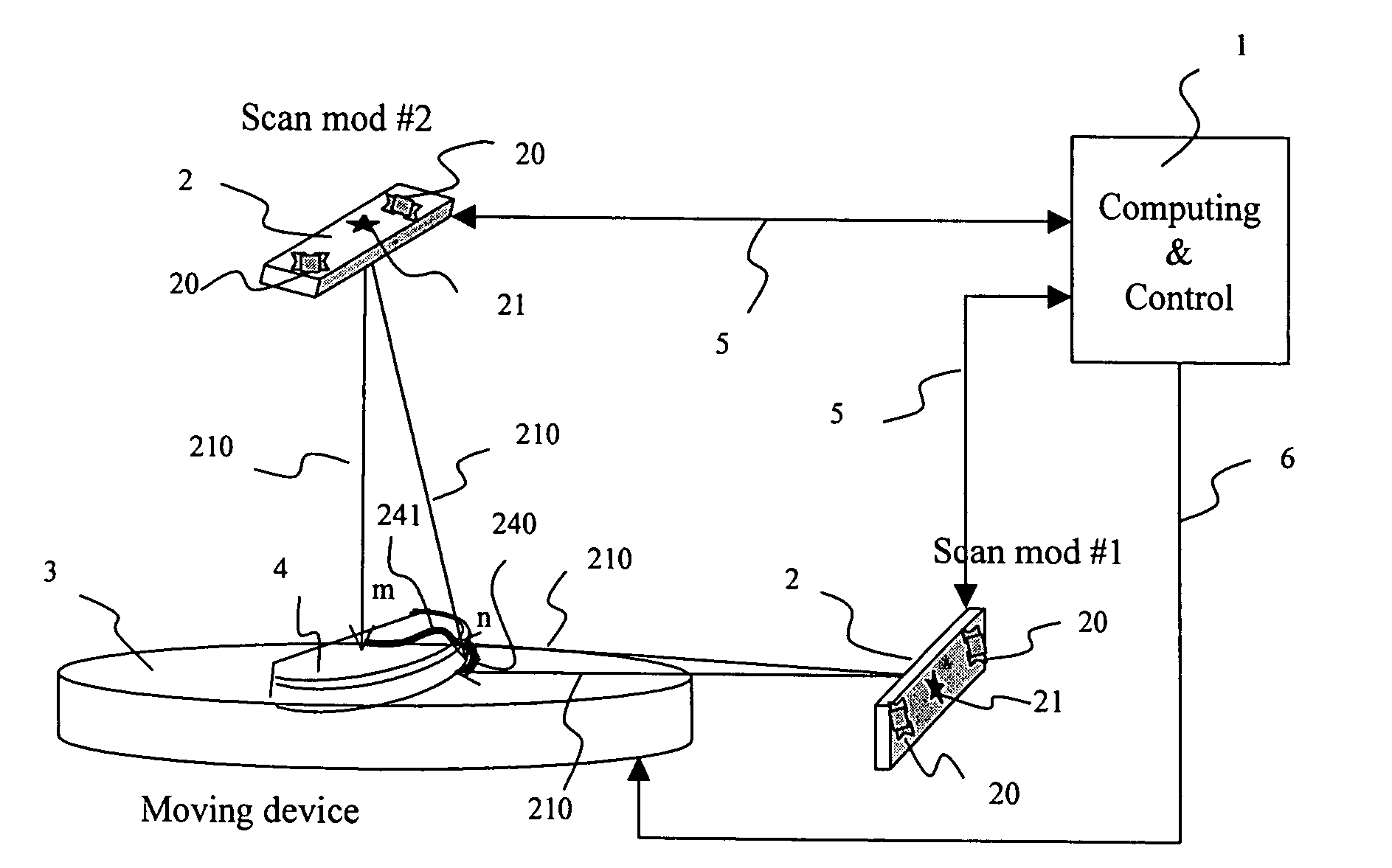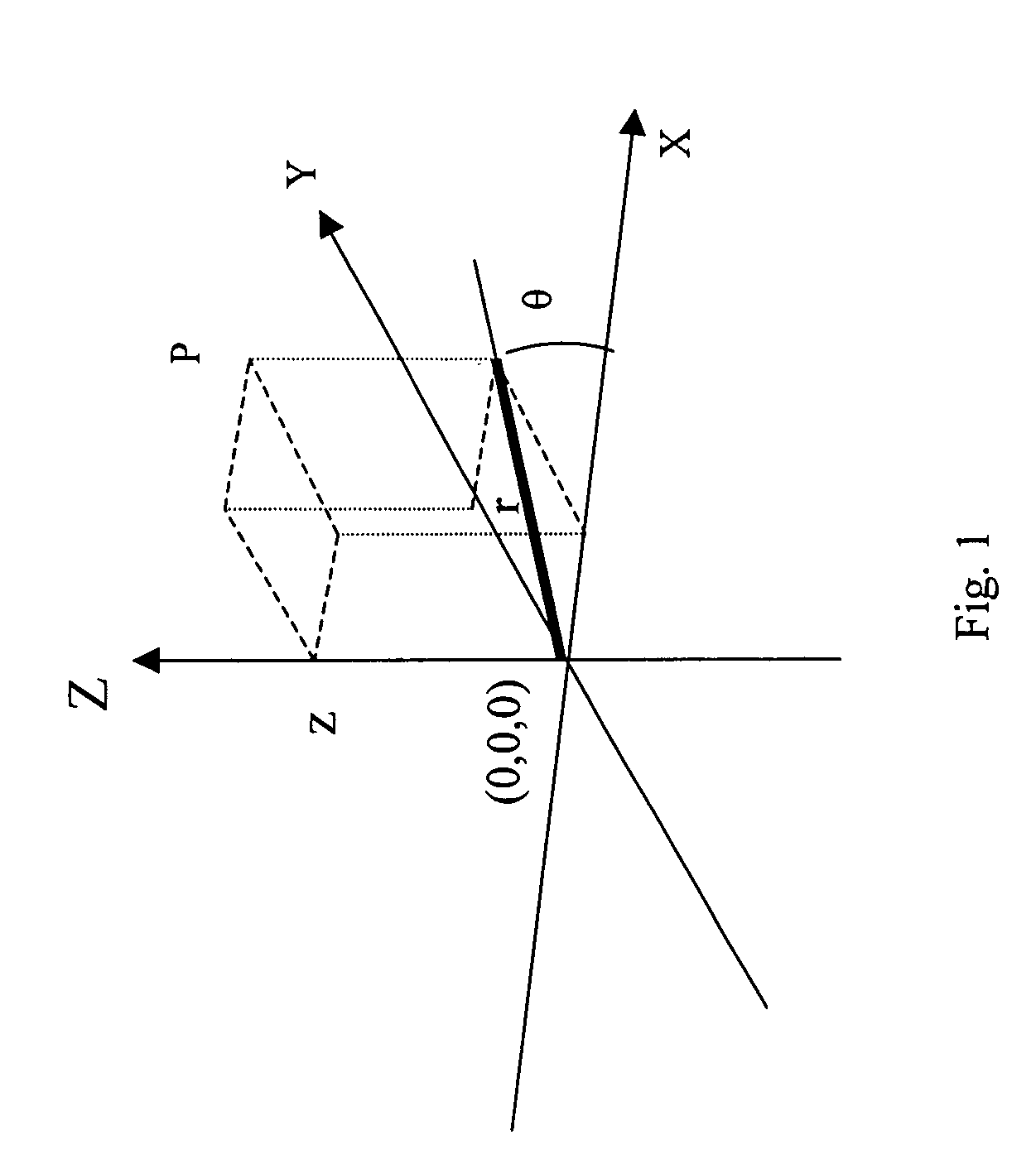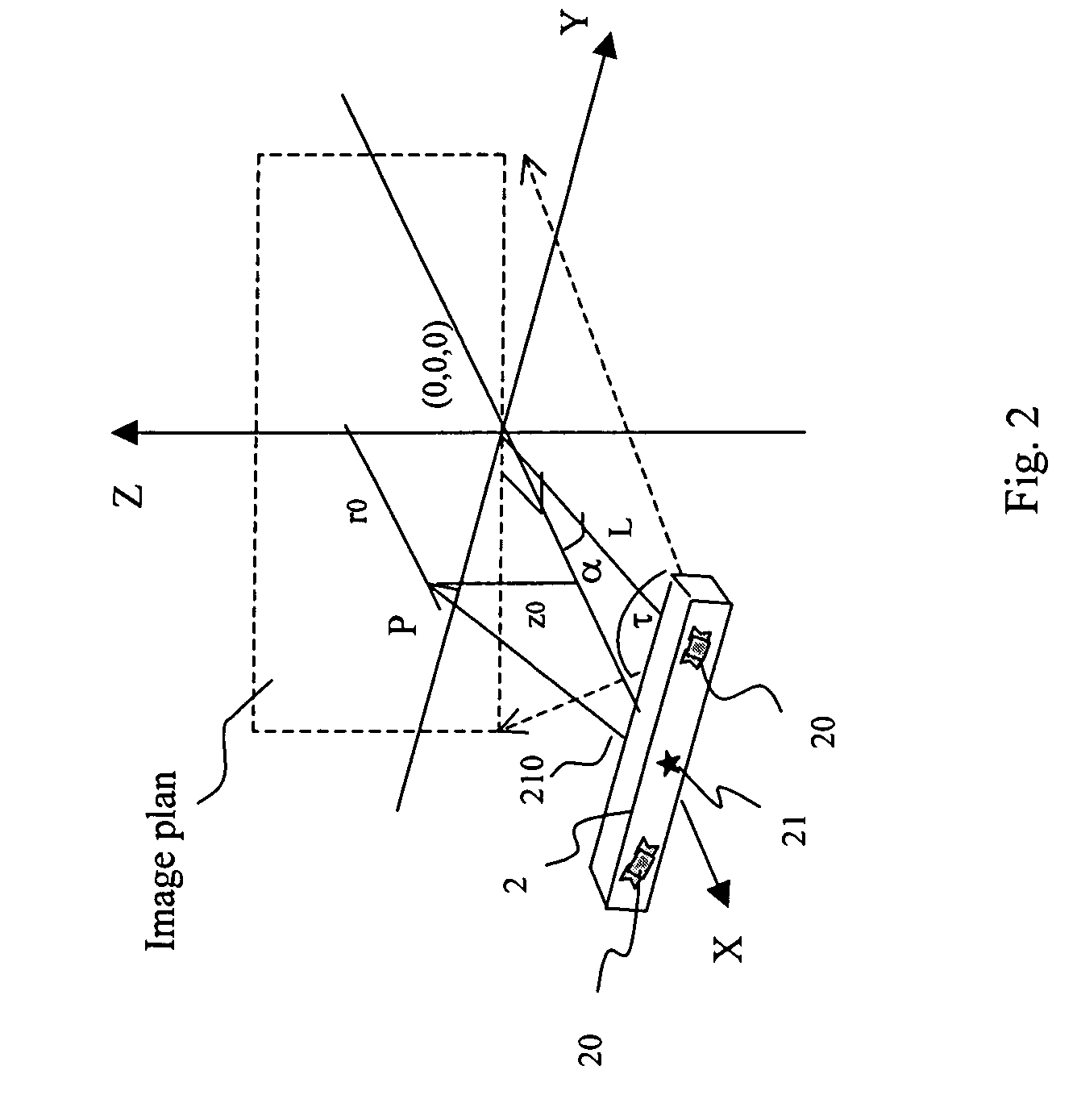Method and apparatus for three-dimensional surface scanning and measurement of a moving object
- Summary
- Abstract
- Description
- Claims
- Application Information
AI Technical Summary
Benefits of technology
Problems solved by technology
Method used
Image
Examples
Embodiment Construction
[0034]The present invention is a three dimensional (3D) scanning technique based on a non-contact device, the scan module. The scan module utilizes a line light source and an image sensor to scan the surface of a physical object. A set of mathematical equations are used to compute the coordinates defining the scanned object's surface. Multiple aligned scan modules are used, with the data from the multiple scan modules being merged into a single coordinate map.
[0035]The position of a point P can be represented by either rectangular coordinates (x, y, z), or by cylindrical coordinates (r, θ, z). FIG. 1 displays the relationship of these two systems.
x=r*cos θ
y=r*sin θ[0036]z is the same in both systems
[0037]There exist many light based techniques to measure the coordinates defining the surface of an object. FIG. 2 illustrates the measuring system of the present invention comprising a scan module 2 which includes a light source 21, an image sensor 20, a projected light stripe 210 (that ...
PUM
 Login to View More
Login to View More Abstract
Description
Claims
Application Information
 Login to View More
Login to View More - R&D
- Intellectual Property
- Life Sciences
- Materials
- Tech Scout
- Unparalleled Data Quality
- Higher Quality Content
- 60% Fewer Hallucinations
Browse by: Latest US Patents, China's latest patents, Technical Efficacy Thesaurus, Application Domain, Technology Topic, Popular Technical Reports.
© 2025 PatSnap. All rights reserved.Legal|Privacy policy|Modern Slavery Act Transparency Statement|Sitemap|About US| Contact US: help@patsnap.com



